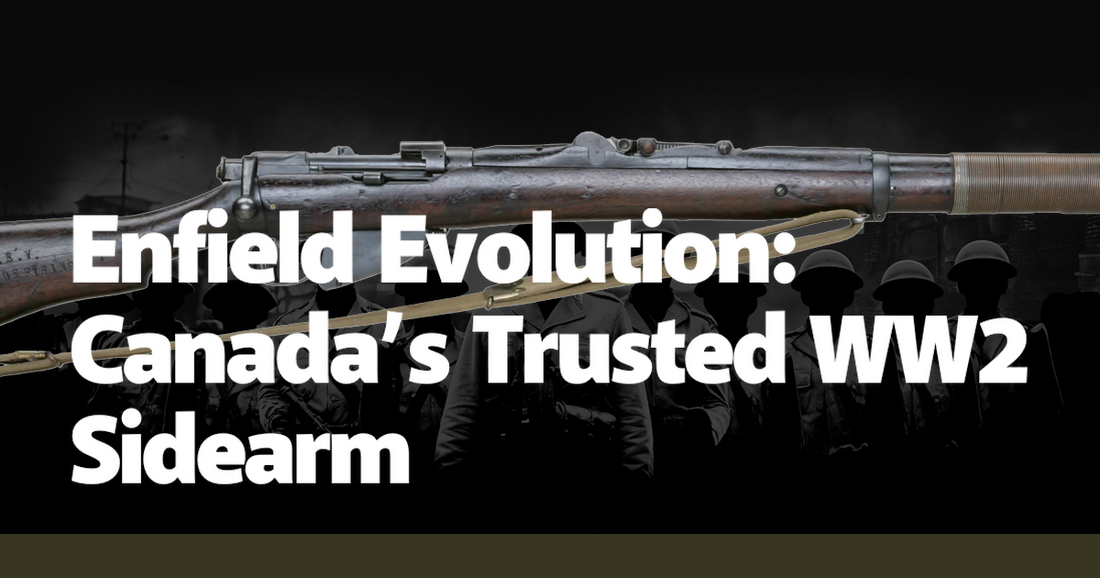The Enfield revolver, a staple in the hands of Canadian soldiers during World War II, is a weapon steeped in history and reliability. This sidearm, officially known as the Enfield No. 2 Mk I, was not just a tool of war but a symbol of trust and resilience. Developed by the Royal Small Arms Factory in Enfield, England, it became the standard issue for British and Commonwealth forces, including Canada. Its design was a response to the need for a robust and dependable sidearm that could withstand the harsh conditions of war, from the muddy trenches of Europe to the sweltering jungles of Southeast Asia.
The Enfield's evolution began in the interwar period when the British military sought to replace the aging Webley revolvers. The Enfield No. 2 Mk I was introduced in 1932, featuring a double-action mechanism that allowed for rapid firing. Its .38/200 caliber, while not as powerful as the .455 Webley, was chosen for its balance between stopping power and manageability. Canadian soldiers appreciated this sidearm for its ease of use and maintenance. Anecdotes from veterans often highlight the revolver's reliability; it was a weapon that, even when caked in mud or exposed to the elements, would fire when needed.
One of the most compelling stories comes from the Battle of Ortona in 1943, where Canadian forces faced fierce resistance from German paratroopers. In the close-quarter combat that characterized this brutal urban warfare, the Enfield revolver proved invaluable. Soldiers recount how the revolver's compact size and quick draw made it ideal for the narrow streets and buildings of Ortona. The Enfield's ability to deliver six rounds swiftly gave Canadian troops a crucial edge in these deadly encounters, often determining the difference between life and death.
The design of the Enfield revolver was not without its critics, however. Some soldiers found the double-action trigger pull to be heavy, which could affect accuracy. Yet, the benefits often outweighed the drawbacks. The revolver's solid frame and simple mechanism meant it could endure the rigors of the battlefield. Its top-break design allowed for quick reloading, a feature that was particularly appreciated during intense firefights. The Enfield's evolution included minor adjustments over time, but its core design remained largely unchanged, a testament to its effectiveness.
In addition to its practical advantages, the Enfield revolver carried a psychological weight. For many Canadian soldiers, it was a symbol of their connection to the broader Commonwealth forces. Carrying the same sidearm as their British counterparts fostered a sense of unity and shared purpose. This was especially significant during joint operations, where interoperability of equipment could mean the difference between success and failure. The Enfield revolver, therefore, was more than just a weapon; it was a link in the chain of Allied cooperation.
The legacy of the Enfield revolver extends beyond its wartime service. After World War II, surplus Enfield revolvers found their way into civilian hands, becoming popular among collectors and shooting enthusiasts. Its historical significance and robust design made it a prized possession. Museums and military historians often feature the Enfield in their collections, highlighting its role in the Canadian military history. The revolver's presence in post-war culture underscores its lasting impact and the respect it garnered from those who wielded it.
Training with the Enfield revolver was a crucial part of a Canadian soldier's preparation. Manuals and training sessions emphasized the importance of mastering the double-action trigger and quick reloading techniques. Soldiers practiced tirelessly to ensure they could rely on their sidearm in a crisis. The stories of these training sessions, often recounted with a mix of frustration and pride, reveal the dedication required to become proficient with the Enfield. This rigorous training paid off on the battlefield, where the revolver's reliability and the soldier's skill combined to form a formidable force.
In conclusion, the Enfield No. 2 Mk I revolver was more than just a sidearm for Canadian soldiers during World War II; it was a trusted companion and a symbol of resilience. Its evolution from a replacement for the Webley to a mainstay of the Commonwealth forces highlights its effectiveness and reliability. The stories of its use in battles like Ortona, the unity it fostered among Allied troops, and its enduring legacy all contribute to its storied place in military history. The Enfield revolver remains a testament to the ingenuity and determination of those who designed, manufactured, and wielded it in the fight for freedom.

